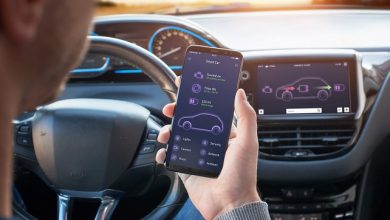Novero: Blurring the lines between automotive and consumer electronics industry
Automobiles are still marketed on price, and less on horsepower or the treasure trove of classical engineering craft that has been refined over decades. Questions of style and technological usefulness are in demand: is this car compatible with my iPhone?
Freddie Geier, CEO | Novero GmbH
Does anyone buy a smartphone because it has a certain amount of memory or a particular processor? My observations suggest that technical performance details play an ever-decreasing role, while questions of usability, comfort, digital usefulness and design are more important selection criteria.
Something similar is afoot in the automotive industry. According to an industry report by Parks Associates, more than 75% of vehicle owners in the US indicated that at least one connected car feature would have an influence on their decision to purchase a vehicle. Over half of the owners stated that connected services were “very important.”

It is clear: the car buyer of today and tomorrow is motivated by different criteria. Automobiles are still marketed on price, and less on horsepower or the treasure trove of classical engineering craft that has been refined over decades. Questions of style and technological usefulness are in demand: is this car compatible with my iPhone?
How can the auto industry ensure that connectivity solutions and apps in a vehicle are not hopelessly outdated in short order? I fully expect to drive my car for five years, or even longer. If my dashboard offers the same services as the day I bought the car, I will definitely not be satisfied with it five years later.
When it comes to connected services, the auto industry has to keep pace with the quick development cycles that we see in the software industry. This approach only works if the auto industry learns a few things from the companies that are eyeing the connected car market–Google and Apple, for example. The work style at these upstarts from the Silicon Valley differs starkly from the industrially influenced approach in the auto industry. An agile approach on projects and a culture that values making mistakes as part of the learning process are explicitly welcomed there. As a result, these companies are faster at learning and gaining insights in this changing market, and they often make decisions that are qualitatively better.
And they can develop new things extremely quickly.
Apple and Google are also showing us how to simply and easily add new functions and services to hardware through automated over-the-air updates. Over-the-air updates are a solution to the challenge of continually providing current improvements to a car that the customer will use for years. We cannot expect anyone to take a car to the shop each time a software update is due–that is simply not reasonable in the connected car era, because software is constantly being improved and the intervals between updates are so short that manual installation is not an option.
Cars are not smartphones on wheels, of course. The safety requirements in the auto industry are much higher. Update processes must address safety needs appropriately and meet these safety requirements, just like the software itself. Our collaboration with experts in this area makes it possible for us to offer secure processes for over-the-air updates as part of our platform.
For OEMs and providers, customers’ new demands also mean that solutions must be conceived from the very beginning as part of a process of continuous improvement. Users expect seamless integration of mobile technology. To develop cars for the future, we have to anticipate these needs.
We are focusing on making products that can be easily integrated and can also quickly take on new functions or devices. Our telematics product, for example, was developed five years ago with the goal of being able to react quickly to the demands of the market and readily add on new features. The Apple Watch has only been available since April 24, 2015, and we were able to integrate it in just a few days.
The same applies for entertainment and navigation services: if you don’t consider the changing needs and expectations of consumers, and thus offer systems that can only be changed or improved with significant effort, then you are taking the risk that your customers will be disappointed. Or that they just use their smartphone in the car. Connected services provided by the manufacturer will simply be ignored if they are no longer current.
Our strength lies in being able to accompany OEMs as their work approaching the mobile industry. As a company in the auto industry, I don’t have to copy Apple or Google 1:1. The industry has great strengths that it can continue to exploit.
In the context of this development model and the speed with which companies like Apple develop complicated products that get people excited, we should let them inspire us. And if we somehow manage to make Apple-Fans happy with our products, then we can look with confidence to the future.
About the author
Born in 1963, Freddie is known for his entrepreneurial spirit and his ability to build technology companies for the future. His work integrates his extensive experience in hardware, software, and mobile business and, of course, his history at Apple

